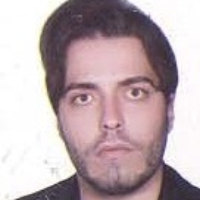Evaluation of Urban Regeneration in the Historical Context of Tabriz City with a Culture-Oriented Approach
Culture includes concept and value of life, approach to life and also the creation of meaning. So, culture contributes to the general elevation of "self-esteem" in a region, and socially develops a community. Besides, it is considered as a source of people's confidence and security. Urban plans and new models of urban economic development have been emerged along with the fifth wave of economic development in the last 20 years. So far significant advances have been obtained in our understanding of cultural development, urban designs, economics, and life cycles, from early efforts to embrace culture and the arts to achieve urban regeneration to public space, public art, and street revitalization and development of cultural industries. At the end of the last century, sustainable urban regeneration, which cared much about the protection of historical-cultural values and the preservation of social context, gradually became the mainstream. District 8 of Tabriz, as the historical-cultural context of the city, has undergone many changes in the process of modernity and urban renewal, and many of the historical-cultural objects of the region have been either destroyed or deserted. Therefore, in this study, by considering the improvement of physical space and cultural heritage in Tabriz city and considering their related relationship as the cornerstone of urban development, we will examine culture-oriented urban regeneration.
The research method is descriptive-exploratory, survey based and has been done based on a questionnaire. Besides, the components and indicators of the case were categorized. The statistical population of the research is Tabriz city experts. The sample size includes 40 people, which includes 20 urban planning professors and 20 managers and experts related to the historical context of Tabriz city. In this research, the structural equation method was used for data analysis. The structural equation modeling is a powerful analysis technique that explains the relationships between multiple variables. Structural equations are able to examine more than one relationship simultaneously, which is different from other multivariate tests. Measurement model and structural model are two main components of structural equations. The measurement model examines the relationship between the measured components and the latent variable, while the structural model measures the interrelationships among the latent variables. For a better conceptual understanding of this model, the latent variables are divided into two types: endogenous and exogenous variables. The structural equations are defined with the help of the following basic model.
The results showed that 16 features might be used for the evaluation of the level of satisfaction of three underlying variables at a significance level of 0.001. As a result, these characteristics are known as acceptable and satisfactory parameters that can be used for evaluating urban regeneration with a culture-oriented or culture-oriented approach. Further, the results showed that the form obtained the maximum estimation value (γ=0.85), followed by "Function" (γ=0.78), "Meaning" (γ=0.69). There is a high correlation between performance and meaning variables with loading (γ=0.715). The results showed that the reconstruction of the.
As a result, direct involvement of citizens in creating cultural events and activities are among the important factors that affect urban regeneration based on culture.The attribute "social participation" has a lower loading than other factors.Cultural resources are more related to residents' personal experiences and feelings, which are more likely to resonate with residents and reflect the depth of urban culture.As a leading part of the "revitalization of the historic part of the city", cultural-oriented urban regeneration is expected to solve the real problems of incomprehensibility of cultural information, lack of access to cultural places, and lack of use of cultural resources. then the innercity area is stimulated so that cultural destruction is avoided.
- حق عضویت دریافتی صرف حمایت از نشریات عضو و نگهداری، تکمیل و توسعه مگیران میشود.
- پرداخت حق اشتراک و دانلود مقالات اجازه بازنشر آن در سایر رسانههای چاپی و دیجیتال را به کاربر نمیدهد.


